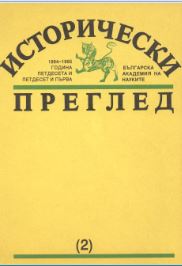Author(s): Andrea Dobeş / Language(s): Romanian
Issue: 3-4/2021
Ordained priest on June 24th 1903, metropolitan canonic (1921), delegate to the Vatican Commission for drafting the Canonic Code of the Eastern churches (1929) in October 1936, Ioan Bălan was named Greek Catholic bishop of Lugoj. Arrested on October 29th 1948 in Lugoj, detained at the local Securitate centre, the next day was transferred to the Ministry of Internal Affairs. On October 31st 1948 he was admitted to Dragoslavele, then to the Căldăruşani Monastery (February 27th 1949). On May 24th 1950 he was transferred to the Sighet Penitentiary - the "Danube" - work colony, being employed in a working unit, following the Ministry of Internal Affairs decision No 64 from January 30th 1952 for 24 months. By the Ministry of Internal Affairs decision No 684 from December 28th 1953, the penalty was increased by 24 months, starting from January 30th 1954. On January the 4th, 1955, he was transferred from Sighet, together with bishops Iuliu Hossu and Alexandru Rusu, and was admitted two days later to the Gerota Sanatorium and on the 2nd of February 1955 to the Hospital „I.C. Frimu" from Bucharest. On May 7th 1955 he was moved with forced domicile to the monastery of the Court of Argeş. On April 23rd 1956, the three Greek Catholic bishops sent a memoir to Gheorghiu-Dej in which they protested against the abolition of the Greek Catholic Church. As a reply, the authorities decided on July 12 1956 to move the hierarchies to the Ciorogârla monastery. After priests Vasile Chindriş and Izidor Ghiurco held a liturgy in Cluj in front of several thousand believers on August 12, 1956, the next day, the three bishops were divided. Bishop Ioan Bălan remained in Ciorogârla. He died on August 4th 1959 at the age of 79. The inhuman conditions in prison, and the restrictive life during forced domicile associated with the old age, led to his death but consecrated him as a martyr, who preferred the final sacrifice in the fight to preserve his faith. On March 19th 2019 the Holy See recognized the martyrdom of Bălan. The beatification liturgy was held on June 2nd in Blaj, on the Plain of Freedom, by Pope Francis.
More...





